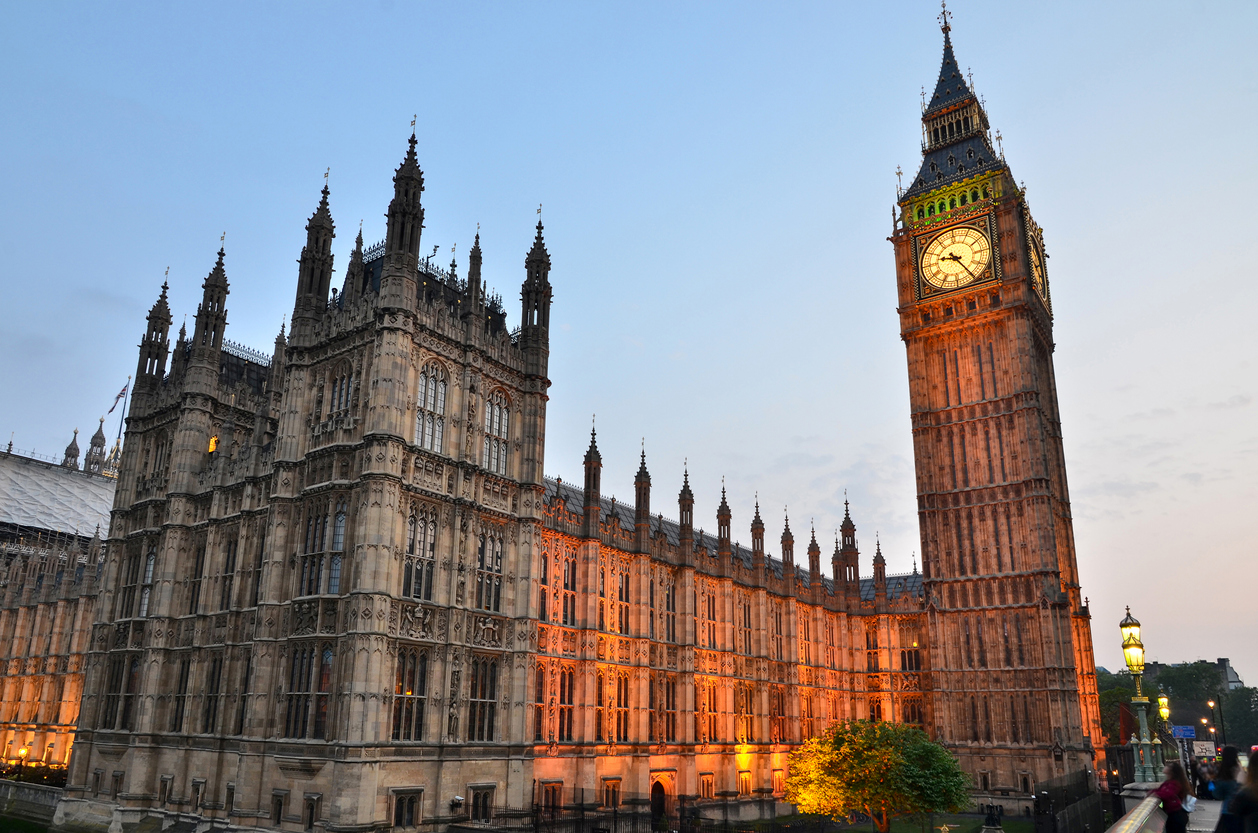
The United Kingdom Government introduced a National Security and Investment Bill (the “Bill”) to Parliament in November 2020. It passed the House of Commons on 20 January 2021 and will now make its way through the House of Lords. When enacted, the Bill will give the Government unprecedented new powers to investigate and block corporate deals that it suspects might threaten the security of the UK, with potentially thousands of deals having to be pre-notified and cleared by the Government each year. While it is not limited to foreign investment, non-UK investors may attract additional scrutiny. Deal-makers will therefore now need to navigate a new regulatory regime that is much more onerous than the current limited national security intervention powers, and in addition to the usual UK merger control rules.
This piece looks at the background to the Bill, the mandatory notification procedure it will introduce, the Government’s powers to ‘call-in’ other deals for review, how it will assess national security risks and the potential implications of the Bill for investors.
The Bill a Government white paper, a Parliamentary Select Committee inquiry, and various interim measures stemming from concern over foreign investment in UK assets, including Chinese investment in the Hinkley Point nuclear power plant and Huawei’s involvement in the UK 5G network. There have also been allegations of ‘aggressive acquisitions’ during the COVID-19 pandemic, with the Government giving itself new intervention powers to protect the UK’s capability to combat public health emergencies. There was therefore little surprise when the Government announced a new framework to allow further scrutiny of transactions and investments. At present, the UK Government can only intervene in a transaction on national security grounds where the deal meets the thresholds for UK merger control. The bar for that has recently been lowered for targets with potential national security implications in order to facilitate more Government intervention, but the Bill will replace that regime with a greatly expanded role for the State.
First, the Bill will introduce a pre-closing notification obligation for certain deals, which the Government estimates will catch over 1,000 transactions per year. Second, it will empower the Government to ‘call-in’ acquisitions it considers may give rise to a national security risk, up to five years after the deal has completed. As an anti-avoidance measure, the latter power will apply to any deal completed on or after 12 November 2020 (the day after the Bill was introduced to Parliament).
Mandatory Notification
Scope
The obligation to notify the of a deal will arise where an investor acquires a right or interest in a “qualifying entity” that participates in particular activities within certain key sectors. A qualifying entity can be any form of legal entity (e.g. a company, partnership or trust) and includes non-UK entities that carry on activities in the UK or supply goods or services to persons in the UK. The Bill gives the Government wide powers to make regulations specifying the sectors of the economy and the types of transaction and activity that will engage the notification obligation.
The Government launched a public consultation on the sectors and deals it proposes should be covered, which closed in early January. The results have not yet been announced so it remains to be seen whether the responses will affect the Government’s plans, but the consultation identified 17 sectors as raising potential concerns. These include not only the most obvious candidates but also broad categories that may not have immediately obvious national security implications. The proposed sectors are:
- Advanced Materials
- Advanced Robotics
- Artificial Intelligence
- Civil Nuclear
- Communications
- Computing Hardware
- Critical Suppliers to Government
- Critical Suppliers to the Emergency Services
- Cryptographic Authentication
- Data Infrastructure
- Defence
- Energy
- Engineering Biology
- Military and Dual-Use Technologies
- Quantum Technologies
- Satellite and Space Technologies
- Transport
There is no minimum target turnover or deal value threshold for the notification obligation to apply, and it will catch deals involving non-UK entities that are active in the UK.
Level of Control
A “notifiable acquisition” will arise where the transaction results in the acquiring person either acquiring a right or interest equivalent to at least 15% of the shares or voting rights in the target, or gaining control over the target. Gaining control of an entity means acquiring either:
- more than 25% of the shares or voting rights, with a new notifiable acquisition if an existing shareholder passes thresholds of 50% or 75%; or
- voting rights that enable the acquirer to ensure or prevent the passage of any class of resolution.
Consequences
The Bill provides that a notifiable acquisition will be void if it completes without Government approval. It is not clear what that will mean in practice. Most obviously, it would mean that the terms of the deal would be legally unenforceable. If the parties were content to implement the deal regardless, the Government would have the same powers to unwind a non-notified deal as it has under the voluntary regime (see below).
There will also be very significant corporate and personal consequences for failing to clear a notifiable acquisition. A person who completes such a deal (including any director, manager etc. of a body corporate) risks a criminal conviction with up to five years imprisonment, an unlimited fine, or both. Alternatively, the Government will be able to impose civil penalties of up to the greater of 5% of turnover or £10 million.
Unlike the voluntary regime, the mandatory notification obligation will not have effect so will not affect deals closed prior to the Bill becoming law. However, investors in UK businesses (and businesses with UK interests) should follow the Bill with keen interest, in anticipation of being faced with a significant new regulatory hurdle in 2021.
The ‘Call-in’ Regime and Voluntary Notification
The Bill does not just create risk for deals that qualify as notifiable acquisitions; it also empowers the Government to ‘call-in’ non-notifiable deals for review where it perceives national security concerns.
Scope
This power will exist where a “trigger event” takes place in relation to a “qualifying entity” (see above) or a “qualifying asset”, and the Government thinks the deal could create a national security risk.
The term “qualifying asset” covers a very broad range of assets, including land and corporeal moveable property as well as “ideas, information or techniques which have industrial, commercial or other economic value” (the Bill gives the examples of trade secrets, databases, source code, algorithms, formulae, designs, software, and plans, drawings and specifications). In each case, the asset must be either within the UK or its territorial sea (in the case of land or corporeal property), or otherwise used in connection with activities carried on in the UK or the supply of goods and services to persons in the UK.
A “trigger event” will occur where a person gains control of a qualifying entity or asset. Control of an entity is defined as explained above (and so the 15% threshold does not apply to the call-in power), or where the acquirer gains material influence over the target’s policy (reminiscent of the ‘control’ test in UK merger control). For an asset, gaining control means a person acquiring a right or interest in, or in relation to, the asset that makes them able to use the asset or direct or control how it is used (or able to use it / direct its use to a greater extent). There is, again, no minimum turnover or deal value threshold.
These very broad definitions will give the Government a call-in power over essentially any type of deal where a national security risk might be identified.
Timings
The call-in power can be invoked within six months of the Government becoming aware of the trigger event, up to a maximum of five years after the trigger event. This extremely long window is intended to ensure no transactions slip through the net, either by accident or by design.
This lengthy risk period can be avoided by voluntarily sending notification of the relevant transaction (either before or after completion) to a new Investment Security Unit under the remit of the Business Secretary. As with merger control, it will be for the Government to decide whether the notification contains sufficient information, which means it will control the clock. Once the Government accepts the notification it will have 30 working days to decide whether to call-in the deal for further investigation over an additional 30 working day period (extendible to 75 working days).
A key point to note is that all deals completed after 12 November 2020 will come within the scope of the call-in regime, with the six month / five year periods only commencing when the relevant provisions of the Bill take effect. This anti-avoidance measure means the Bill must already be factored into deals that might raise UK national security considerations, particularly because the process to have a deal cleared via voluntary notification will not even become available until the Bill is fully enacted and in force. In the interim period, parties will have no option but to decide whether to proceed at risk.
Consequences
Where the Government identifies a risk to national security it can impose remedies to prevent, remedy or mitigate that risk. The Bill gives a wide discretion on the remedies that can be imposed, but options are likely to include:
- unwinding a completed deal (e.g. by divestment of the relevant entity or asset);
- prohibiting a deal that has not yet been completed;
- requiring the business to appoint someone to supervise and potentially control any activities that would cause a national security concern; and
- operational restrictions, such as making UK security clearance a condition of a person accessing particular information, working at a particular site, taking part in certain operations, or even holding a management role in the organisation.
If a completed deal is called-in or notified, the Government will be able to impose interim orders to prevent the review process being frustrated, most obviously by prohibiting the acquirer from integrating the acquired business or asset into its own operations. Such orders are routinely made in merger control cases, but may well be even stricter in the national security context.
In a further parallel with UK merger control (also, in principle, a voluntary regime), the potential consequences of completing a deal only for it to be called-in for review – including the administrative and financial burden of complying with an interim order, as well as the substantive risk of a forced sale of the entity or asset purchased – mean that buyers and investors are likely to err on the side of caution and try to make any deal that might have national security implications conditional on Government clearance.
Interestingly (and very much unlike merger control), the Bill confers a power on the Government to give financial assistance to an entity in consequence of an order. That perhaps reflects a principle that the State should meet at least part of any additional cost incurred by a private entity as a result of measures imposed on national security grounds.
How Will National Security Risks Be Assessed?
The Bill does not define potential risks to national security in any meaningful sense. However, the Government has published a draft ‘Statement of Policy Intent’ describing how it expects to use the call-in power.
The Government expects to consider three risk factors:
- Target risk: the entity or asset subject to the trigger event could be used to undermine UK national security (e.g. the entity or asset plays a key role in national security matters or could, simply because of its nature, put national security at risk if it fell into the ‘wrong’ hands – there is likely to be significant overlap here with the sectors identified for mandatory notification);
- Trigger event risk: the acquisition itself could undermine national security (e.g. because it could facilitate unauthorised access to sensitive information, or give a hostile actor leverage over the UK in other matters); and
- Acquirer risk: the identity of the acquirer would give rise to national security concerns.
On the latter risk, a range of factors would need to be considered on a case-by-case basis, but the nationality of the acquirer – while not formally part of any test under the Bill – will surely be a key issue. However, concerns will not necessarily be limited to nationals of hostile states: in 2019 the UK Government intervened in the acquisition of the British satellite telecommunications company Inmarsat plc by Connect Bidco, a US-UK-Canadian joint venture, obtaining undertakings to ensure the maintenance of strategic services and prevent unauthorised access to sensitive information.
The various risks will be considered in combination – for example, the draft Statement of Policy Intent notes that a pension fund investing in UK infrastructure would involve a target risk but no acquirer risk.
Use and Application
At this point, it is only possible to speculate as to how strictly the Government will apply the powers in the Bill and, in particular, how many deals will need to be notified pursuant to the Bill. By the Government’s own estimate, however, mandatory filings alone will result in between 1,000 and 1,830 notifications per year.
For the voluntary regime, and notwithstanding that the draft Statement and other guidance documents give some indication of how risks will be assessed, it will take time to build up a body of precedent that will allow buyers to consider when to notify. Even that may be complicated by the need for confidential decisions in light of the obvious sensitivities. Buyers are therefore likely to err on the side of caution for some time, in which case the Government should also expect to receive a large number of voluntary notifications.
There will therefore be an enormous increase in the number of cases dealt with compared to the current public interest intervention regime, under which only 12 transactions have been reviewed on national security grounds since 2003 (albeit with a recent uptick following reductions to the applicable turnover thresholds, including the frustration of Chinese-backed Gardner Aerospace Holdings’ proposed acquisition of Impcross, a UK manufacturer of aerospace components).
The Bill will impose a strict and wide-ranging new regime that has the potential to cause significant disruption to deals and investments. It is essential that investors, sellers and advisers are aware of the risks involved, including for any deal completed after 12 November 2020, and plan their transactions accordingly.











